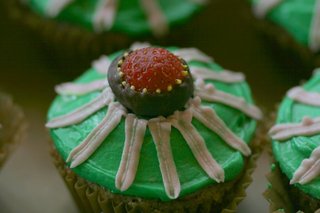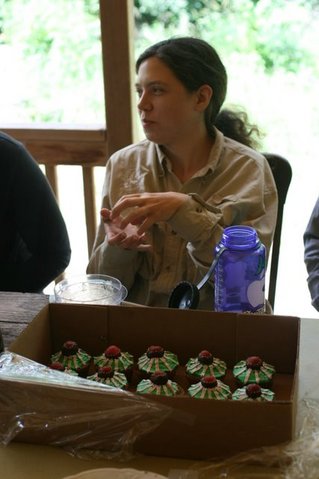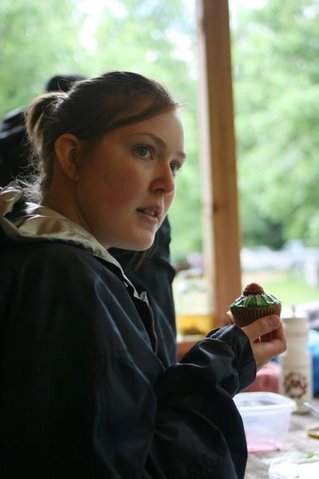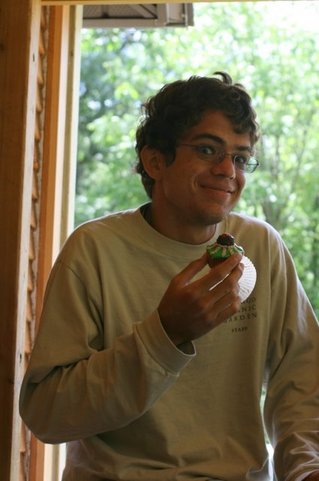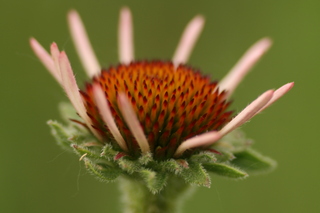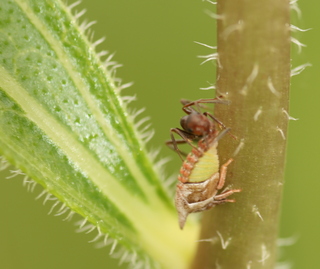|
|
Here’s a picture of a Stipa seedling in the Common Garden. I’m about to create a form for entering data on our seedlings. We are debating if we should count and measure each leaf or count leaves and measure the length of just the longest leaf. Most of our time will be spent finding the plants and/or the toothpicks that we put in to mark them. So, taking the measurements of each leaf shouldn’t add that much time. Any thoughts?
Stuart and I did an initial investigation of about 30 locations where Stipa was planted. We found plants at 40-50% of the locations! Caroline, what was your estimate for germination of these seeds?

We searched for seedlings in Caroline’s Hegg Lake plot today. Old and new seedlings were found. Here are the data:
Nextgenresc-19 Aug 09data.xls
Come to the farm for a picnic celebrating the near end of the Echinacea season. I’ll be making pesto and roasted zucchini and yellow squash. Jean is making brownies. We’ll provide drinks and s’more necessities-including a monster burn pile. Hope to see you 6:30ish.
Yesterday we finished measuring in the Common Garden! Here are some details about the protocol used for 2009:
Gardens: Inbreeding & INB2 we used the same form as in 2008. Basal and Flowering Rosettes were counted separately. Crisp leaves were included in the leaf counts.
Gardens: 2001, Monica’s, SPP, Big Batch, and 96-99 we used an abbreviated form. We did not record data on insect damage. Insects on all rosettes (basal and flowering) were recorded on the main form. Insects on the heads were recorded on the subform. Cauline leaves were not counted. The longest cauline leaf (longest leaf on the tallest flowering rosette) was recorded on the main form. For basal leaves, crisp leaves were included in leaf counts and also noted, as were leaves that were “gone.” Pips or duds with no florets were only recorded if there was a peduncle long enough for a twist-tie collar.
Staples mark positions in the Common Garden where plants have died. Our policy has been to add a staple to a position where a plant has not been found for 3 years. This year, we’ve followed that protocol for the Inbreeding and INB2 gardens. However, we have added staples in Big Batch, 2001, SPP, Monica’s, 1996, 1997, 1998, 1999, and 1999s where plants have only been “Can’t Find” for TWO years. This should minimize the time it takes to search positions. We hope that plants and staples won’t both be found at the same position in the future.
To celebrate peak flowering in the common garden, Megan made these awesome cupcakes. We all enjoyed them. Thanks, Megan!!


Megan with her breathtaking display of deliciousness.
Do you notice the stages of flowering presented here?

Mimi contemplates consuming something so beautiful.

Stuart basks in the celebration of his beloved study species.

Daniel enjoys with passion.
The common garden hit peak flowering status on July 13, 2009. The graph below shows how many heads have started and ended flowering each day. Approx. 197 heads have yet to shed pollen of the 1,614 found.

As of 25 July 2008:
1422 of 1850 heads have started to flower in the common garden.
171 heads are done flowering.
194 of 1033 plants have not started to flower.
Here is a graph showing the number of heads that started to flower on each day.

|
|


